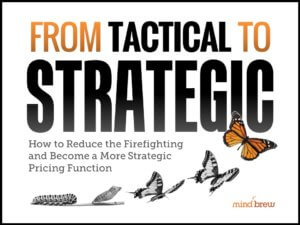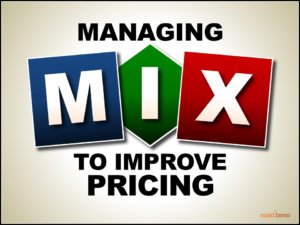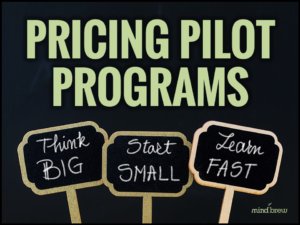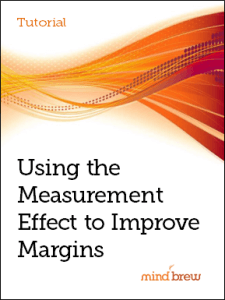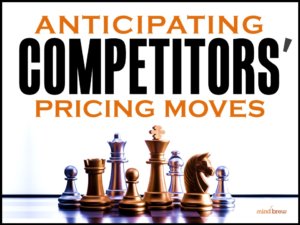It doesn’t take an advanced degree in economics to recognize that demand plays a crucial role in shaping pricing outcomes. It’s easy to see how, when there’s relatively low demand, sales teams will succumb to pricing pressure and resort to deeper and deeper discounts in order to close deals and meet quotas. On the other hand, when demand is relatively high, it’s much easier for sales teams to hold the line on discounts and, in some instances, justify price premiums.
While this fundamental understanding underscores the influence of demand on price realization, there’s a prevalent myth about the nature of B2B demand that causes too many pricing teams to overlook a big strategic improvement opportunity.
You see, many pricing groups operate under the assumption that demand in B2B markets is a somewhat fixed quantity, or a bit of a given in the marketplace. And with this “it is what it is” perspective, it’s only natural to conclude that all one can do is make the best of whatever demand there happens to be at any given time.
To be fair, the underlying assumption is pretty accurate. The myth, however, is in the follow-on conclusion that there’s nothing one can to do about it.
In most B2B markets, overall demand in the near term is indeed somewhat fixed. But the share of that overall demand that flows to any particular supplier is anything but fixed. In other words, while the overall size of the pizza may not change in the near term, the size of your company’s slice of the pie can change dramatically.
Now, what determines the size of your slice of the pie? The effectiveness of your company’s sales and marketing efforts. And that’s where B2B pricing teams can absolutely have a positive influence. Here are some measures that can boost sales and marketing effectiveness, leading to improved demand dynamics and, consequently, better pricing outcomes:
Refining Targeting Definitions and Opportunity Rankings
Not all prospects are equally valuable; not all opportunities are equally beneficial; and not all demand is equally desirable. Working with the sales and marketing functions to refine target prospect profiles and opportunity rankings, you can help concentrate those efforts on the most lucrative and advantageous parts of the market. This strategic focus helps maximize efficiency and effectiveness in funneling more demand…of higher quality…in your company’s direction.
Improving Messaging and Value Communication
Putting a more compelling value proposition into the marketplace is essential for drawing a disproportionate share of demand. Not only that, a more compelling and credible value proposition can create advantageous price perceptions and predispositions. Here again, pricing teams can work with their sales and marketing functions to improve and enhance the messaging going into marketing materials and sales tools — pitch decks, websites, data sheets, email sequences, product slicks, and so on — to get beyond the puffery and platitudes to make a more clear and credible case around differential value.
Aligning Sales Coverage to True Distribution of Demand
Optimizing sales coverage to mirror the actual distribution of untapped demand ensures that some sales resources aren’t being starved of viable opportunities; while others are so overloaded with opportunities they can’t possibly capture them all, thus leaving a gap for competitors to exploit. Starting with more precise targeting definitions and estimates of untapped demand, coverage alignment might involve redefining geographic territories, allocating sales responsibilities by customer/solution type, or creating assigned account lists.
These are just a few of the many ways in which a B2B pricing team can work with others in their organization to positively influence their company’s portion of the overall demand in their market. Of course, none of these things will be easy and they certainly won’t happen overnight. But they are definitely doable.
And that’s the point: There are things you can do to improve demand dynamics.
B2B pricing groups should reject the myth that because overall demand “is what it is” you have to throw up your hands and just make the best of whatever comes your way. Instead, pricing groups should embrace the opportunity to influence their slice of the pie and create more advantageous demand dynamics. After all, the essence of strategic pricing is proactively rigging the game to your advantage by optimizing all the factors that are within your control — and these aspects of demand are definitely within your control.

